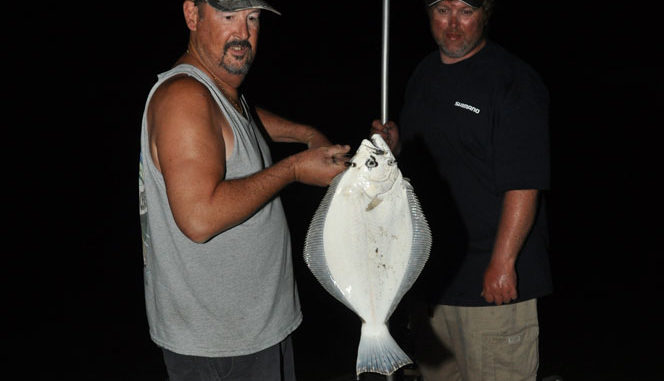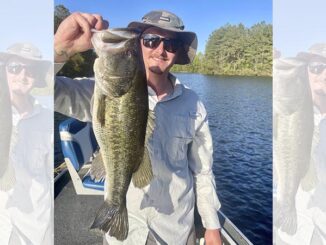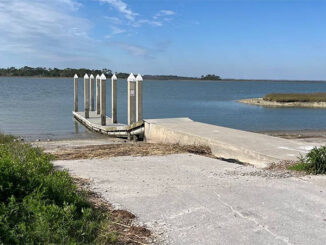
It is not often that a recreational trip to procure fish begins well after dark. However, guide Allen Jernigan met a friend, Tony Rhodes, at a ramp in Sneads Ferry, N.C., at 9:30 p.m.
“We have been having some good nights,” said Jernigan, 37, operates Breadman Ventures Guide Service. “Most nights, we can gig a recreational limit for three fishermen. It might take 90 minutes, but it could also take all night long.”
When he was younger, Jernigan gigged flounder by wading along, sticking them and tossing them into a floating washtub. His modern gigging rig is a 17-foot aluminum johnboat with a 60-horsepower outboard engine. He built an aluminum rack on the bow that holds four 65-watt lights juiced by a generator. With that arrangement of lights, he sees flounder resting on the bottom as deep as the water clarity allows. He uses 10-foot and 12-foot Sea Striker gigs with metal shafts and stainless steel points as he motors along using his trolling motor.
“I am glad the wind calmed down,” Jernigan said. “If there is one thing that hurts a gigging trip, it is wind. It stirs up the water and makes it too dark to see the fish.”
Jernigan (910-467-1482) headed to a bank that was protected from the breezy southwest winds that had blown all afternoon. He shut off the outboard and set down the trolling motor. The water was clear enough for the flounder hunter to see the bottom and just deep enough that propeller would not dig into the sand. He used the gig point to point out outline of a flounder in the sand.
“There’s a flounder print,” he said. “It shows where a fish was lying. When the tide is falling or it is low, flounder head to the deeper holes and the river channel. When it is rising, they move up onto the flats to feed.”
Rhodes also pointed out flounder prints. Eventually, they rounded a point where the water was too cloudy for them to see the bottom any longer.
“It takes experience to know where flounder go based on wind direction,” Jernigan said. “Certain banks are eroded by wind, making the water dark. The sandier banks are the best places when it has been windy.
They passed up several undersized flounder before the boat slid right over one that looked like it was big enough to stick before they could stop. They backed up the boat by pushing against the bottom with their gigs until the fish visible again. Rhodes struck the first flounder what would become a banner night.





Be the first to comment